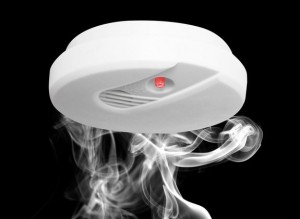 Many social indicators fail to measure what people think and feel about their lives—the quality of their relationships, their positive emotions, resilience, satisfaction with life domains, or the realization of their potential. Positive evaluations of life including the presence of positive emotions (e.g., happiness, serenity, interest), social ties, and perceptions of life satisfaction and meaning, are commonly referred to as “well-being”.
Many social indicators fail to measure what people think and feel about their lives—the quality of their relationships, their positive emotions, resilience, satisfaction with life domains, or the realization of their potential. Positive evaluations of life including the presence of positive emotions (e.g., happiness, serenity, interest), social ties, and perceptions of life satisfaction and meaning, are commonly referred to as “well-being”.
Month: July 2014
General Recording Criteria for an OSHA Recordable
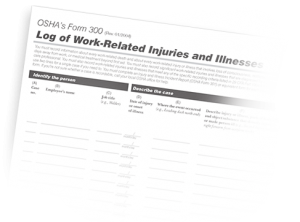 You must consider an injury or illness to meet the general recording criteria, and therefore to be recordable, if it results in any of the following: death, days away from work, restricted work or transfer to another job, medical treatment beyond first aid, or loss of consciousness. You must also consider a case to meet the general recording criteria if it involves a significant injury or illness diagnosed by a physician or other licensed health care professional, even if it does not result in death, days away from work, restricted work or job transfer, medical treatment beyond first aid, or loss of consciousness.
You must consider an injury or illness to meet the general recording criteria, and therefore to be recordable, if it results in any of the following: death, days away from work, restricted work or transfer to another job, medical treatment beyond first aid, or loss of consciousness. You must also consider a case to meet the general recording criteria if it involves a significant injury or illness diagnosed by a physician or other licensed health care professional, even if it does not result in death, days away from work, restricted work or job transfer, medical treatment beyond first aid, or loss of consciousness.
Why is it important for people with diabetes to be physically active?
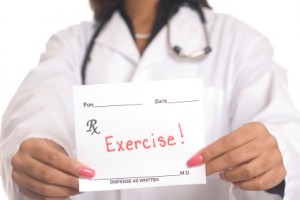 Physical activity can help you control your blood glucose, weight, and blood pressure, as well as raise your “good” cholesterol and lower your “bad” cholesterol. It can also help prevent heart and blood flow problems, reducing your risk of heart disease and nerve damage, which are often problems for people with diabetes.
Physical activity can help you control your blood glucose, weight, and blood pressure, as well as raise your “good” cholesterol and lower your “bad” cholesterol. It can also help prevent heart and blood flow problems, reducing your risk of heart disease and nerve damage, which are often problems for people with diabetes.
Chronic Conditions and Aging
 Arthritis and hypertension are the two most common health conditions affecting older workers, impacting 47% and 44%, respectively, of workers over the age of 55. An even greater proportion of workers (more than 75%) are estimated to have at least one chronic health condition that requires management. Diabetes is perhaps the most costly of these; one study found that 1/3 of all Medicare spending goes towards management of diabetes. The frequency of these conditions and others in older adults has important implications for workers can physically perform their duties, but also when. Higher morbidity means more absenteeism when an employee feels sick and more presenteeism when an employee is ill but shows up to work regardless. However, individual health risk factors are a stronger influence on future healthcare associated costs than advancing age alone. In comparing young workers with “high risk” of chronic disease (5 or more risk factors) to older workers with few or no risk factors, the younger workers had significantly higher medical costs associated despite the disparity in the age groups: 19-34 year olds, versus older workers aged 65-74.
Arthritis and hypertension are the two most common health conditions affecting older workers, impacting 47% and 44%, respectively, of workers over the age of 55. An even greater proportion of workers (more than 75%) are estimated to have at least one chronic health condition that requires management. Diabetes is perhaps the most costly of these; one study found that 1/3 of all Medicare spending goes towards management of diabetes. The frequency of these conditions and others in older adults has important implications for workers can physically perform their duties, but also when. Higher morbidity means more absenteeism when an employee feels sick and more presenteeism when an employee is ill but shows up to work regardless. However, individual health risk factors are a stronger influence on future healthcare associated costs than advancing age alone. In comparing young workers with “high risk” of chronic disease (5 or more risk factors) to older workers with few or no risk factors, the younger workers had significantly higher medical costs associated despite the disparity in the age groups: 19-34 year olds, versus older workers aged 65-74.
via CDC – Healthy Aging – NIOSH Workplace Safety and Health Topic.
Keep your Family Safe from Home Fires
Although deaths and injuries from residential fires have decreased in the past several years, deaths from fires and burns are still the third leading cause of fatal home injuries (CDC). Seventy percent of these deaths are from inhaling smoke. Two-thirds of deaths from home fires occurred in homes with no smoke alarms or no working smoke alarms.
Fires are more likely to happen in certain areas or by certain equipment in your house. Be extra careful while you’re cooking, smoking, around candles, furnaces, electrical cords and fireplaces, and with children, toddlers and babies nearby.
According to the U.S. Fire Administration, cooking equipment, most often a range or a stovetop, is the leading cause of reported U.S. home fires and home fire injuries.
via Home Fire Safety, Fire Safety Checklist, Tips & Plan, keep your family safe from home fires.
Powered Industrial Trucks Safety
 Powered industrial trucks, commonly called forklifts or lift trucks, are used in many industries, primarily to move materials. They can be used to move, raise, lower, or remove large objects or a number of smaller objects on pallets or in boxes, crates, or other containers.
Powered industrial trucks, commonly called forklifts or lift trucks, are used in many industries, primarily to move materials. They can be used to move, raise, lower, or remove large objects or a number of smaller objects on pallets or in boxes, crates, or other containers.
The hazards commonly associated with powered industrial trucks vary depending on the vehicle type and the workplace where the truck is used. Each type of truck presents different operating hazards. For example, a sit-down, counterbalanced high lift rider truck is more likely than a motorized hand truck to be involved in a falling load accident, because the sit-down rider truck can lift a load much higher than a hand truck. Workplace conditions also present different hazards. For example, retail establishments often face greater challenges than other worksites in maintaining pedestrian safety.
The best way to protect employees from injury also depends on the type of truck operated and worksite where it is being used.
Using Stepladders Safely
 Stepladders range in size from 3 ft. to 20 ft in length along the side rail. Stepladders shorter than 3 ft are considered Step Stools. The highest standing level on a stepladder is slightly more than 2 ft from the top of the ladder. The highest standing level is required to be marked on the specifications label on the side rail of the product. Therefore, when planning your job, the maximum work height is established by adding the user’s height and reach to the highest standing level of the stepladder.
Stepladders range in size from 3 ft. to 20 ft in length along the side rail. Stepladders shorter than 3 ft are considered Step Stools. The highest standing level on a stepladder is slightly more than 2 ft from the top of the ladder. The highest standing level is required to be marked on the specifications label on the side rail of the product. Therefore, when planning your job, the maximum work height is established by adding the user’s height and reach to the highest standing level of the stepladder.
Proper Use
- A Stepladder requires level ground support for all four of its side rails. If this worksite condition does not exist, a stepladder should not be selected for the job.
- A Stepladder must not be used unless its base is spread fully open and the Spreaders locked. Stepladders are not to be used as Single Ladders or in the partially open position.
- In order to prevent tipping the ladder over sideways due to over-reaching, the user must climb or work with the body near the middle of the steps. The ladder should be set-up close to the work. Never attempt to move the ladder without first descending, relocating the ladder, and then re-climbing. Do not attempt to mount the ladder from the side or step from one ladder to another unless the ladder is secured against sideways motion.
- In an effort to avoid losing your balance and falling off the stepladder, the user must not step or stand higher than the step indicated on the label marking the highest standing level. The user must also not step or stand on the Top Cap or bucket/pail shelf.
- When ascending or descending the ladder, always face the ladder and maintain a firm hand hold. Do not attempt to carry other objects in your hand(s) while climbing.
- The braces on the rear of a stepladder are not intended for climbing or standing and must not be used for that purpose. Note, however, that special stepladders are available with steps on both the front and rear and are intended for two users at the same time.
- The anti-slip feet at the bottom of the stepladder side rails must be present and in good condition prior to using the ladder. The ladder must not be used on ice, snow or slippery surfaces unless suitable means to prevent slipping is employed.
- A stepladder must never be placed upon other objects such as boxes, barrels, scaffolds, or other unstable bases in an effort to obtain additional height.
via Stepladders.
Exposure to Bloodborne Infectious Diseases
 Exposures to blood and other body fluids occur across a wide variety of occupations. Health care workers, emergency response and public safety personnel, and other workers can be exposed to blood through needlestick and other sharps injuries, mucous membrane, and skin exposures. The pathogens of primary concern are the human immunodeficiency virus (HIV), hepatitis B virus (HBV), and hepatitis C virus (HCV). Workers and employers are urged to take advantage of available engineering controls and work practices to prevent exposure to blood and other body fluids.
Exposures to blood and other body fluids occur across a wide variety of occupations. Health care workers, emergency response and public safety personnel, and other workers can be exposed to blood through needlestick and other sharps injuries, mucous membrane, and skin exposures. The pathogens of primary concern are the human immunodeficiency virus (HIV), hepatitis B virus (HBV), and hepatitis C virus (HCV). Workers and employers are urged to take advantage of available engineering controls and work practices to prevent exposure to blood and other body fluids.
Campfire Safety
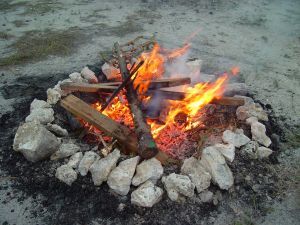 Campfires can be a great addition to your Campout. Below are some tips to get the most out of your campfire experience. Be sure to check with the campground manager or the local forest service about possible restrictions due to forest fire hazards.
Campfires can be a great addition to your Campout. Below are some tips to get the most out of your campfire experience. Be sure to check with the campground manager or the local forest service about possible restrictions due to forest fire hazards.
- Keep the fire small.
- Softwoods, like pine, fir, and cedar, are best for starting a fire.
- Have water available to extinguish the fire properly.
- Never leave a fire unattended.
- Maintain a debris-free area around the fire, so sparks cannot ignite vegetation and spread the fire.
- Make sure ashes are cold when you leave the fire.
- Build fires only in fire rings, stoves or fireplaces.
- Use only dead wood lying on the ground. Do not cut live trees, or branches from trees near the campsite.
- Start the fire by building a small teepee of dry sticks and igniting it with a match. As the fire gets started, add larger pieces of wood.
- Extinguish all fires by pouring water on them, stirring the ashes and pouring more water.
- Leave your fire ring clean for the next campers.
Keys for Creating a Safety Culture
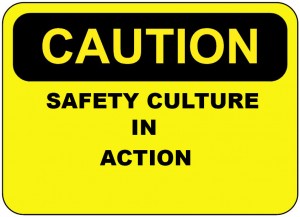 via 7 Keys for Creating a Safety Culture « Aubrey Daniels’ Blog Aubrey Daniels’ Blog.
via 7 Keys for Creating a Safety Culture « Aubrey Daniels’ Blog Aubrey Daniels’ Blog.
Following are seven keys to an effective safety culture:
1. The entire workforce relentlessly pursues the identification and remediation of hazards. Correcting hazards as quickly as possible and maintaining good communications around hazards will not only create a safer workplace, it will improve your employees’ engagement. Frontline employees who believe management takes care of hazards are more willing to participate fully in safety initiatives.
2. Employees at all levels are equally comfortable stopping each other when at-risk behavior is observed and recognizing each other when safe behavior is observed. While good constructive feedback is important for improvement, positive reinforcement for safe behavior is essential for building safe habits. The more actively involved all levels of the organization are in delivering positive reinforcement for behaviors consistent with the desired culture, the stronger the culture will be.
3. No one is blamed for near misses or incidents. Instead, systemic causes are pursued. Often when people engage in at-risk behaviors that lead to incidents, there are organizational systems and practices that inadvertently encourage those at-risk practices. It is important to uncover those and establish accountability for making the changes to the systems and practices to encourage safe behavior.
4. The fear of discipline which drives under-reporting and stifles involvement has been driven out of the culture. Discipline has a place, but most safety issues can be effectively dealt with without discipline, which has side effects that work against building a culture of safety. When discipline is used disproportionately in relation to positive consequences it leads to lower morale, reduced trust, lower productivity, less teamwork and lack of engagement. Equally disturbing is that it suppresses reporting incidents which cripples the organizations ability to learn from mistakes and become more proactive.
5. The workforce is characterized by good relationships at all levels. Trust is an essential component for an effective safety culture. As noted above, mistakes and errors, while unfortunate, provide invaluable learning. Employees who have good working relationships with management are more likely to speak openly and honestly about what is working, what is not and what still needs to change. They are also more engaged in other aspects of safety.
6. Safety is integrated into day-to-day work. It is not treated as something separate to be discussed during a weekly safety meeting or only at shift change. Safety should be part of every conversation and considered in every decision.
7. Successes are celebrated along the way. Pride shouldn’t be focused solely on a company’s safety record, but also in what is being done every day, all day to achieve that record.
Once you have defined the ideal safety culture for your organization, the science of behavior analysis can be used to develop behaviors consistent with that culture. Targeted positive reinforcement of desired behaviors leads to rapid change and the effects multiply quickly as all employees begin to not only display desired cultural behaviors, but to reinforce those behaviors in others.

